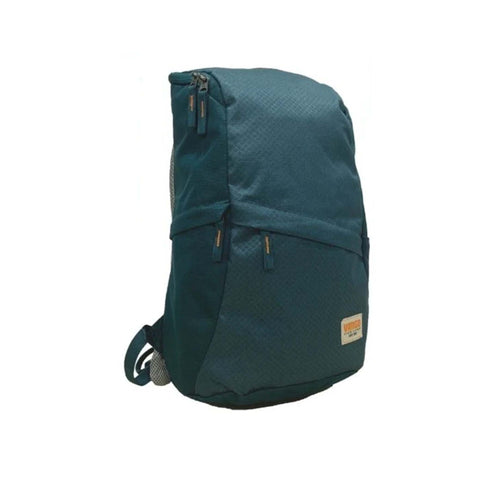How to Fit Backpack Video
How to Fit a Pack from Gossamer Gear on Vimeo.
Video Transcript:
Choosing a pack to fit your body type is generally a function of two simple measurements: your torso length and your hip size.
Your torso length doesn’t actually have anything to do with your height, so make sure to measure. One of the biggest mistakes new backpackers make is choosing a backpack without measuring their torso length first.
To find your torso length, grab a soft tape measure and a friend to help out. If you don’t have a soft tape measure, just use a length of rope and then lay it out to measure when you’re done.
Start out by tilting your head forward and finding the bony bulge at the base of your neck. That’s your C7 vertebra and the top of your torso length.
Next, find the tops of your hipbones and place your hands on your hips with your thumbs pointing towards your spine. Where your thumbs would meet in the middle of your back is the bottom of your torso length.
Knowing your torso length will make buying the right size pack easier, especially if you’re buying from an online retailer.
The next important measurement is your hipbelt size. You’re going to want a comfortable hipbelt with plenty of room for you to be able to cinch it down tight and loosen it up when you need to. You also might lose a little weight on longer trips, so make sure you have a couple of extra inches to be able to cinch down your hip strap tight.
Your hip belt is going to be the most important load bearing structure on your pack, so make sure it’s comfortable and be sure to get this measurement right.
Most companies will allow you to choose your torso length and your hipbelt size separately for your pack. And some even have removable hipbelts.
To find your hipbelt size, simply take your tape measure and wrap it around your waist at the top of your hips. That’s your hipbelt measurement and it’s also the center point of where you want your pack to rest on your hips.
The last size consideration for buying your backpack is its volume capacity. It’s common for lightweight backpackers to choose volume sizes of about 50 liters or less.
If you’re going to be carrying heavier loads, you might want to carry a backpack of 50 - 70 litres.
When it’s time to get your pack on the trail, you’ll want to make sure that it’s adjusted properly to fit your body.
The general rule of thumb for fitting a pack, especially for the first time you wear it, is to loosen all of your straps, put your pack on, and then adjust your straps when the pack is on your body.
Lightweight backpacks are very simple and don’t often have many adjustments to be made. Packs that are made to carry heavier weights will have more adjustment to make, but don’t worry if your pack is simple. More often than not, simple is better.
Start off by adjusting your hipbelt. Your hipbelt is meant to be the main load-bearing element of your pack.
Your hipbelt should straddle the top of your hips, right where you measured your hipbelt size. Every time you put your pack on or take it off you should readjust your hip belt to make sure that you get the right fit.
Next, adjust your shoulder straps. Your shoulder straps are the second load-bearing element of your pack, but they shouldn’t be carrying as much weight as your hips.
You shouldn’t feel a lot of strain in your shoulders while you hike. If that’s the case, then your hipbelt might need an adjustment or you might have a pack that’s got too short of a torso length.
Other common pack adjustments are load lifter straps, your sternum strap, and any cinch straps on the back of your bag.
Load lifter straps are located on top of your shoulder straps. They help ease pressure off of the top of your shoulders by pulling the weight of your backpack closer to your back. When you adjust your load lifter straps, they should be pulling away from your body at about a 45-degree angle.
Many ultralight bags don’t have load lifter straps because they’re not necessary if your pack is light enough.
Sternum straps will release some of the backward pulling motion of your shoulder straps by pulling them closer together on your chest. They are a minor adjustment and shouldn’t be considered mandatory that you always wear your sternum strap.
I’ll use my sternum straps sometimes to ease the tension in my shoulders, but I also find that they can restrict my chest and make a little bit harder. A small elastic band on your sternum strap will help out with this a lot.
Cinch straps can be used to compress the weight of your pack and bring it closer to your back which will make it more efficient to carry. You should always cinch down your backpack before you put it on.
Don’t be afraid to make small adjustments to your pack while you hike throughout the day. I often make small adjustments to let up pressure when certain parts of my body start to feel sore. I might loosen up my shoulder straps to put more weight on my hips while I hike which will help ease pain in my shoulders and back. Or I might change the position of the shoulder straps by using my sternum strap to tighten it up. Sometimes I might even unclip my hipbelt completely and carry all the weight on my shoulders for a little while to really loosen up my hips.
Remember, with a really light bag it’s easy to make quick adjustments that will allow you to hike comfortably. And when you’re more comfortable on your hike, you’re going to have much better time on your backpacking trips.
After you’ve made these final adjustments, you should be good to hit the trail with a comfortable fitting backpack.
Now that you’ve measured your torso length and hip size, find the right pack for you.
This post has been reblogged from Gossamer Gear. Read the original here:




Chris Hayes
50-70 liters can be too much for ultralight backpacking, for example, you can check it here. If you cannot decrease the weight of the stuff you are taking with you, and still need at least 50-liters, it is better to take something like Mariposa 60 Ltr comfortable backpack.